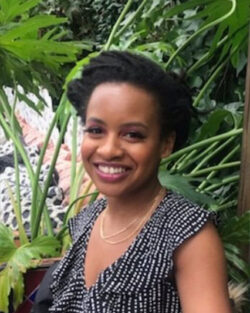
Alexus Lee M.A., LPC
Licensed Professional Counselor
Earlier this fall many of us celebrated Halloween! Many refer to the days leading up to Halloween as “Spooky Season”. To celebrate, people stay up late to watch their favorite scary movies or they may visit haunted houses. This can have detrimental effects on their sleeping. Night terrors and sleep paralysis are common sleep disturbances. While these sleep disturbances are not limited to “Spooky Season” alone, they can be heightened during this time.
Night terrors, also known as sleep terrors, are a sleep disturbance more notable in children. In fact, 40% of children experience them while less than 15% of adults experience them. Night terrors are episodes of screaming, intense fear and flailing while still asleep. Much like sleepwalking, these occurrences are considered parasomnia because the person is still in a mental state of sleep while they are acting. A night terror episode can be just a few seconds to lasting a few minutes. What is unique about night terrors is that the person often does not have a memory about the episode nor recall a nightmare they may have been having. During an episode, the person may begin with a frightening scream, sit up in bed and appear frightened, stare wide eyed, sweat, breathe heavily, kick and thrash and be inconsolable. It may be hard to awaken them and if you do, they may be confused and disoriented with no memory or understanding of what just happened. For the most part, night terrors are no cause for concern. If they become frequent or escalate in a way that causes concerns for safety and routinely disrupts the person’s sleep leading to fatigue and exhaustion, it may be time to see a doctor.
Sleep paralysis is a feeling of being conscious but unable to move. It occurs when a person passes between stages of wakefulness and sleep. If it’s happening while someone is falling asleep it is called hypnagogic or pre-dormital sleep paralysis. If it happens as someone is waking up, it is called hypnopompic or post-dormital sleep paralysis. During these transitions, you may be unable to move or speak for a few seconds up to a few minutes. Some people may also feel pressure or a sense of choking. Many report hallucinations of dark figures or monsters as well, giving rise to a supernatural, ominous explanation for these occurrences. Hypnagogic sleep paralysis happens when you notice your body relaxing and shifting into a sleep state. Hypnopompic sleep paralysis happens when you become aware or conscious before your REM sleep cycle is complete. During REM, your body is “turned off” so that you do not enact your dreams. If you’re becoming conscious during this time you still cannot move or speak which can be distressing.
Most people do not require treatment for either night terrors or sleep paralysis. Professionals suggest keeping a consistent sleep schedule and resting six to eight hours a night to reduce symptoms.